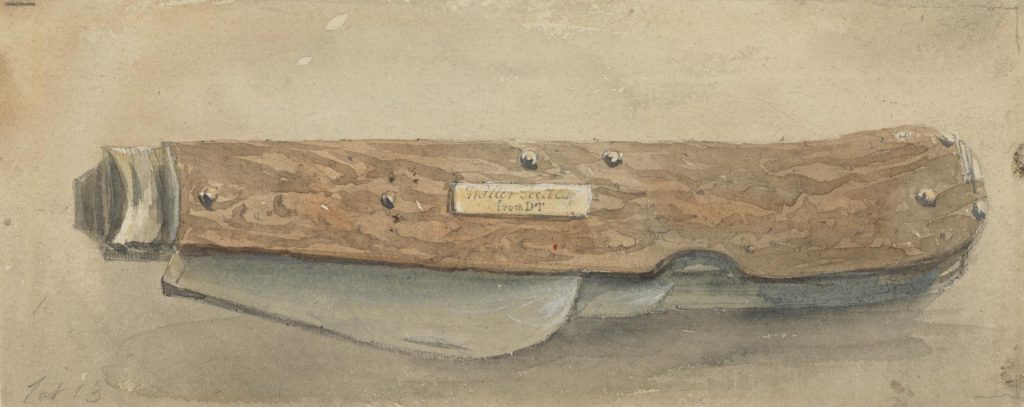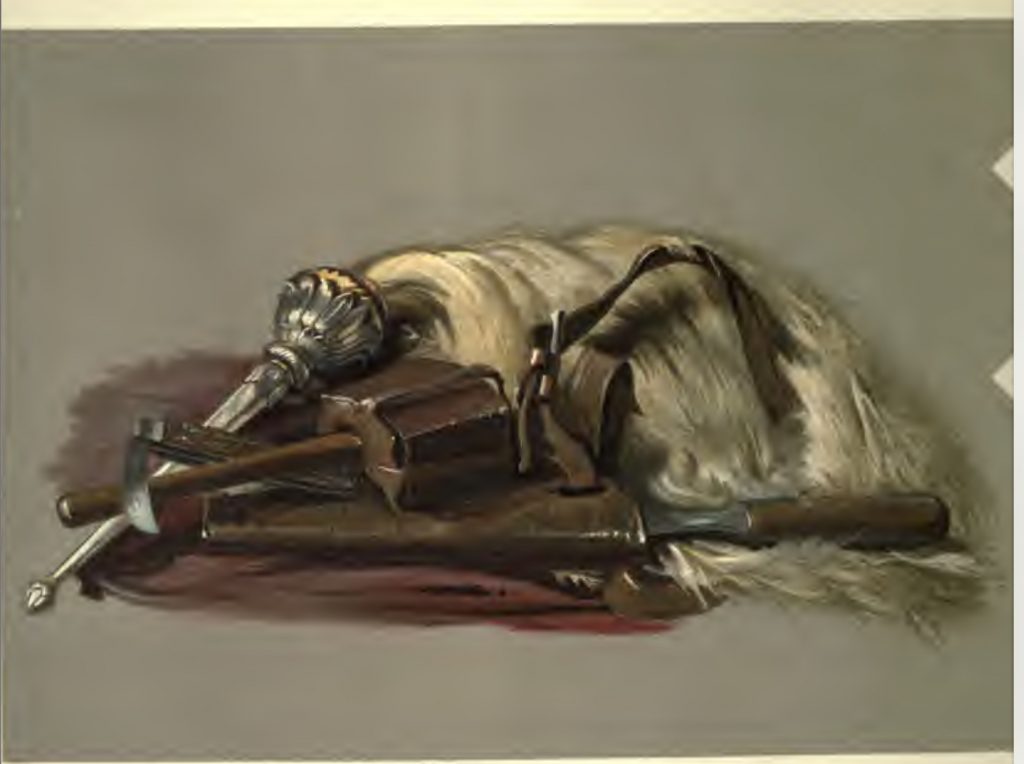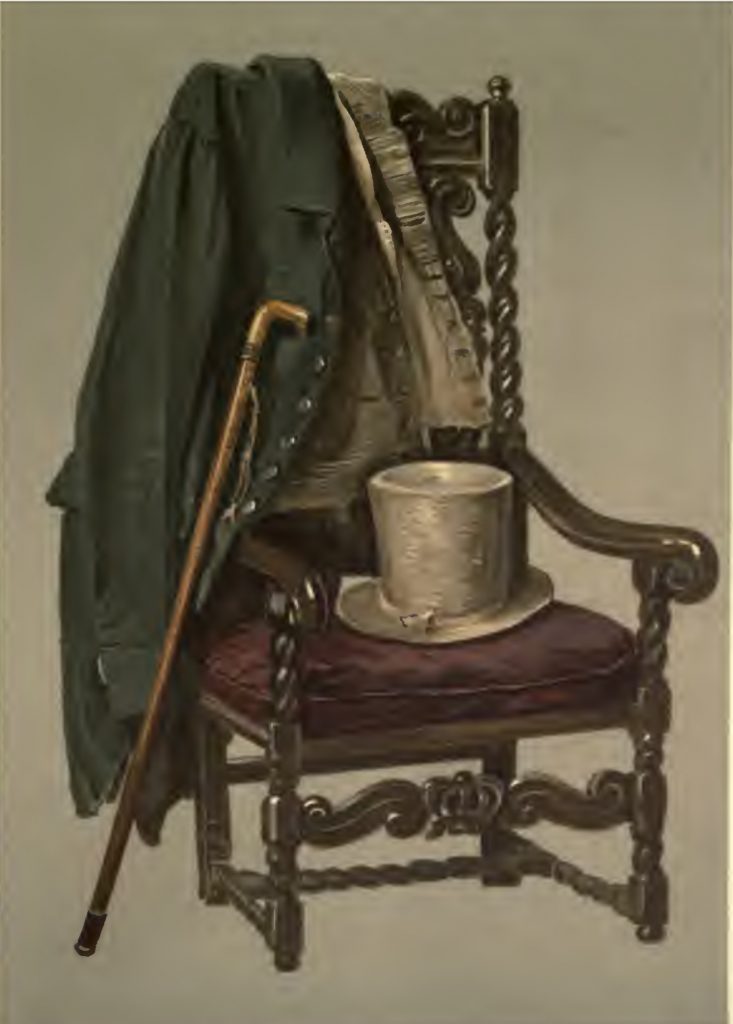The “Sir Walter Scott Every Day Carry”
*Includes a pocket-sized “planter’s knife” made in Sheffield, which Scott bought for himself in that city of steel-works, and carried around the extensive fields of Abbotsford, in order to work on pruning his trees.
*Scott was a very serious land-developer and he often remarked that “his oaks would outlast his laurels.” Since Scott’s poetic laurels are well over 200 years old now, this intuition of his doesn’t seem to be true.
*Scott had quite a large collection of exotic or historic knives and swords, but this humble but effective folder pocketknife was an implement that Scott actually used and genuinely carried around in daily life.
*It’s not clear why Scott somehow wanted to tote around a portable hammer and a chisel. The dedicated book-whisk made plenty of sense for a lifelong book-collector with a taste for unique and little-known historical tomes.


Screenshot

Screenshot
PLATE VII
PRUNING-KNIFE, MALLET, CHISEL, WHITE TAIL
MOUNTED IN ANTIQUE SILVER HANDLE
I
HIS knife is a strong double-bladed knife, with deer-horn handle, in length 6 inches. It has the following interesting story connected with it.
In the autumn of 1815, on his return from France, Sir Walter and Mr. Scott of Gala travelled together to Scotland.
They spent a night at Sheffield, and early next morning Sir Walter sallied forth to provide himself with a planter’s knife of the most complex contrivance and finished workmanship. Having secured one to his mind, and which for many years after was his constant pocket companion, he wrote his name on a card:
‘Walter Scott, Abbotsford,’ and directed it to be engraved on the handle.
On his mentioning this acquisition at breakfast, young Gala expressed his desire to equip himself in like fashion, and was directed to the shop accordingly. When he had purchased a similar knife, and produced his name in turn for the engraver, the master-cutter eyed the signature for a moment and exclaimed,
‘John Scott of Gala. Well! I hope your ticket may serve me in as good stead as another Mr. Scott’s has just done. Upon my word, one of my best men, an honest fellow from the north, went out of his senses when he saw it. He offered me a week’s work if I would let him keep it to himself and I took Saunders at his word!’
Scott used to talk of this as one of the most gratifying compliments he ever received in his literary capacity.
l
II The chisel is 14 inches over all, the blade being 9 in. long and 2 in. at its
broadest part. The mallet and chisel are hung in strong leather cases to a broad
strap and buckle.
Ill
The white tail mounted in silver was used by Sir Walter for dusting his books.
The handle is 14 inches in length.
1
Life (in 10 vols.), vol. v. pp. 88, 89.
*The Walter Scott Every Day Carry always included a staff or cane, because Scott’s right leg had been lamed by childhood polio.
*Also, it seems that the portable chisel is a branch-pruning chisel for larger trees.
Walter Scott, “On Planting Waste Lands”:
Neither is it necessary now to renew the caution, that the pruning work should be entirely performed by the hand-knife, or by the chisel and mallet, and, consequently, during the infancy of the plant. The woodsman can scarce commit a greater blunder than by postponing this most necessary operation until it becomes indispensable to employ the axe, when ten men will not perform the work of one at the earlier period, and when the wounds which might have been inflicted without injury in the infancy of the plant, are sure permanently to disfigure and deteriorate the young tree. But it may not be so unnecessary to remind the young planter, that the safe and proper time for pruning hard-wood is the summer months, when the sap, having ascended, is stationary in the tree, and before it begins again to descend. It is true, all authors agree that to prune a tree while the sap is in motion, either upwards or downwards, is the ready way to cause it to bleed to death.”